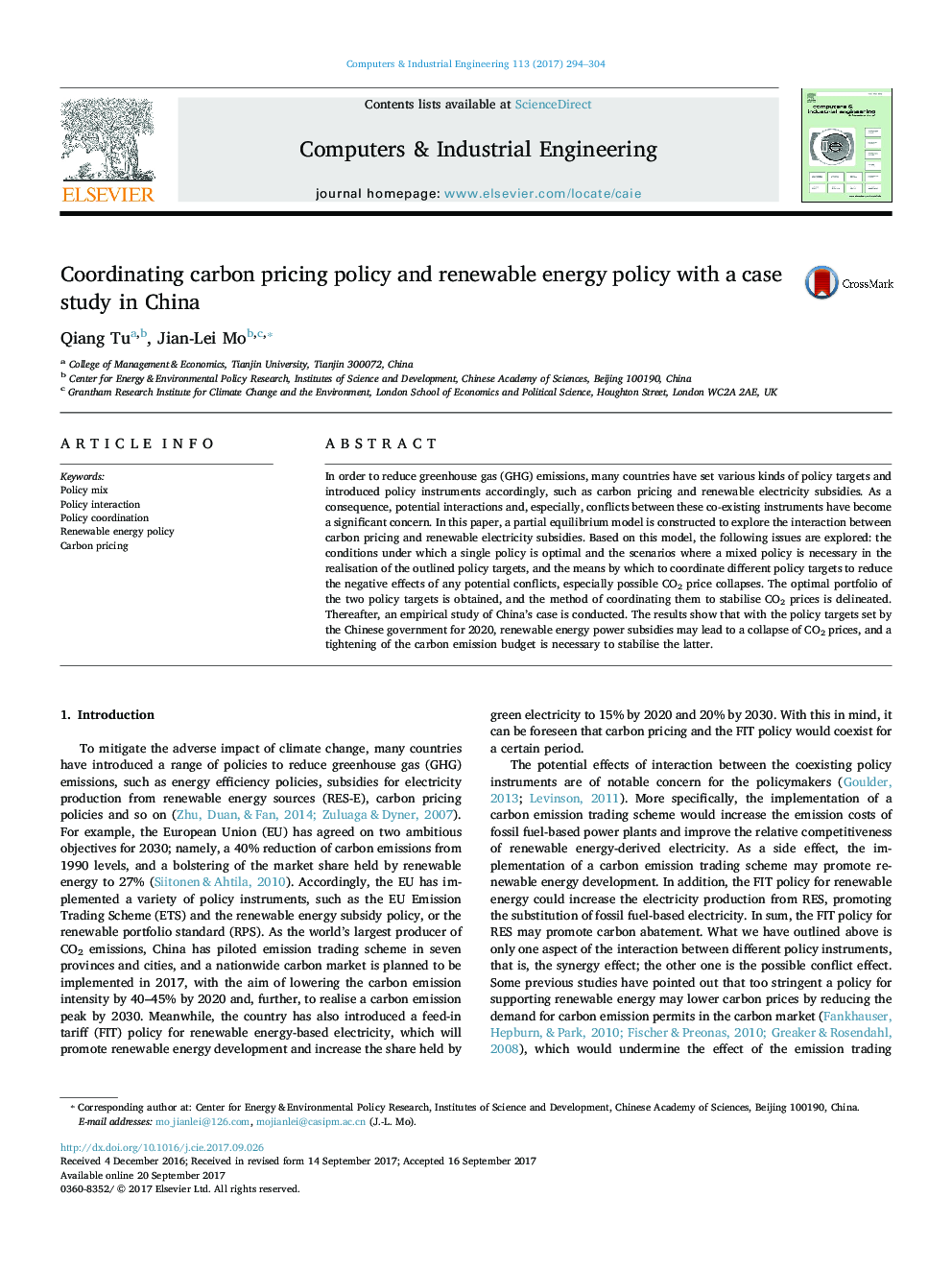| Article ID | Journal | Published Year | Pages | File Type |
|---|---|---|---|---|
| 5127437 | Computers & Industrial Engineering | 2017 | 11 Pages |
â¢The interaction effect between carbon pricing and renewable subsidies is explored.â¢A case study for China is conducted based on a partial equilibrium model.â¢The optimal portfolio of the carbon abatement and renewable targets is obtained.â¢Renewable subsidy may cause a collapse of CO2 price with the policy target in 2020.â¢Tightening the carbon budget may be necessary to stabilise the carbon price.
In order to reduce greenhouse gas (GHG) emissions, many countries have set various kinds of policy targets and introduced policy instruments accordingly, such as carbon pricing and renewable electricity subsidies. As a consequence, potential interactions and, especially, conflicts between these co-existing instruments have become a significant concern. In this paper, a partial equilibrium model is constructed to explore the interaction between carbon pricing and renewable electricity subsidies. Based on this model, the following issues are explored: the conditions under which a single policy is optimal and the scenarios where a mixed policy is necessary in the realisation of the outlined policy targets, and the means by which to coordinate different policy targets to reduce the negative effects of any potential conflicts, especially possible CO2 price collapses. The optimal portfolio of the two policy targets is obtained, and the method of coordinating them to stabilise CO2 prices is delineated. Thereafter, an empirical study of China's case is conducted. The results show that with the policy targets set by the Chinese government for 2020, renewable energy power subsidies may lead to a collapse of CO2 prices, and a tightening of the carbon emission budget is necessary to stabilise the latter.
